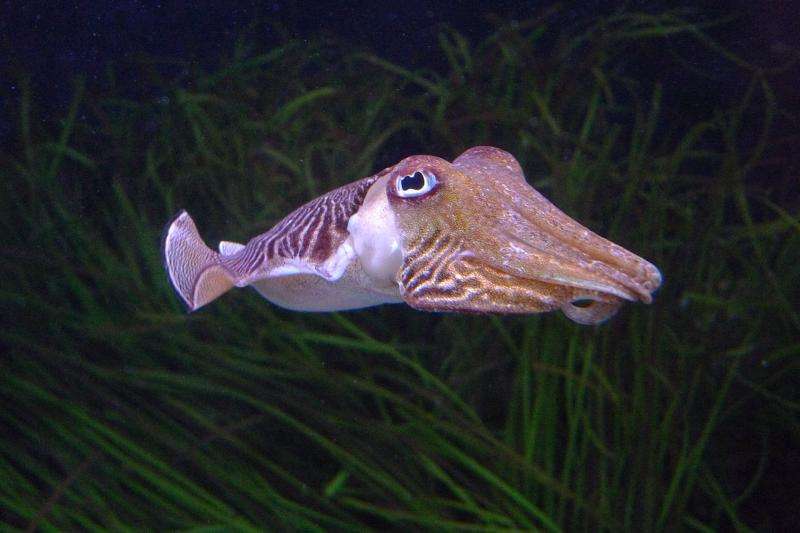Cuttlefish 'mesmerize' their prey with a moving skin pattern, study finds

While sneaking up on prey, cuttlefish employ a dynamic skin display to avoid detection in the last moments of approach, researchers at the University of Bristol have found.
Maintaining camouflage while moving is a challenge faced by many pursuit predators. In this study, "Stealth and deception: adaptive motion camouflage in hunting broadclub cuttlefish" in Science Advances, the team uncovered a novel form of motion camouflage, whereby the broadclub cuttlefish pass dark stripes downward across their head and arms to disguise their hunting maneuvers.
Lead author Dr. Matteo Santon from the University of Bristol's School of Biological Sciences said, "Camouflage has predominantly been studied as an adaptation that prey use to hamper their detection or recognition from predators, and almost exclusively focused on still prey as motion tends to disrupt camouflage."
Senior author Dr. Martin How explains, "Most cuttlefish rely on stealth to sneak up on prey. Due to their fast color-changing skin, these remarkable animals have a wider range of options than most when it comes to camouflage while moving."
By taking a prey crab's eye-view, the scientists were able to show that the passing-stripe display is camouflaging the predator while hunting. Their findings suggest that the visual system of the prey may be overwhelmed by the strong motion produced by the stripes, causing them to fail to detect the looming cues of the approaching predator.
Dr. Santon added, "To our eyes this dynamic display looks very conspicuous, standing out strongly from the background, but it is exploiting the effect of the strong dynamic motion cues produced by the rhythmic passing stripes to deceive the prey.
"And there is more. This species can produce at least three other types of elaborate hunting displays. This is an astonishing variety of adaptations for sneaking up on prey."
He now plans to focus on how the other displays function, and to investigate what makes cuttlefish choose one hunting display over another.
He said, "It was a truly magical experience seeing this species hunting in the wild for the first time. Watching this cuttlefish hunting with the passing-stripe display is like being mesmerized by the tricks of a skilled illusionist."
More information: Matteo Santon, Stealth and deception: adaptive motion camouflage in hunting broadclub cuttlefish, Science Advances (2025). .
Journal information: Science Advances
Provided by University of Bristol


















